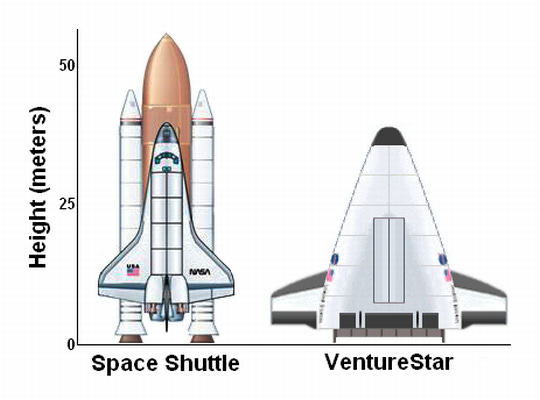ETF Basics and the VentureStar Rocket
A look at passive investing with stocks and a Lockheed Martin Spacecraft
Exchange Traded Funds (ETF)
When I began my investment journey, I started with what I consider to be the most common investing vehicle, stocks. In my high school, I had an investing class where we purchased virtual stocks and saw how they operated. I had also read a few personal finance books by Dave Ramsey, such as Total Money Makeover, or by Tony Robins, like Money, Master the Game, and they both mention investing in stocks. However, this is where the differences in the two lie, and where a lot of opinions arise. Dave Ramsey has been a proponent of Mutual Funds. This is where you invest in a collection of stocks that are picked by an investor in a fund. The problems that arise from this are that there are considerable fees to pay. And you have to have faith that the stock picker can try to beat the stock markets returns. If not, then you have to ask yourself, what is the point of using them? In Tony Robins’ book, Money, Master the Game, he mentions the fact that the 401(k) that many people have, fluctuates with the economy. As a result, if the economy dips and you are about to retire, you can loose a large percentage of your retirement and it can become unsustainable. A problem with 401(k)s are that they are built like index funds. For an index fund, there is no management fee, which helps the user, but you can’t sell or buy it easily. There are set times you can do this. And for 401(k)s, taking it out has serious penalties to it if you are not in your retirement age. For these reasons, this is why my favorite way to purchase stocks are through an ETF. An ETF stands for Exchange Traded Fund. Like a mutual and index fund, these are collections of stocks, which helps to offset the risk in case a company goes under. There are also no management fees, like an index fund, however, you are able to buy and sell it whenever you like. It is no different than the process of purchasing a normal stock. These ETFs are also divided into different themes. Some are specific to one type of business, like tech or pharmaceutical companies, while others can have a focus on dividend production or growth. There are a wide variety to choose from and it is a great way for a beginner to start investing.
VentureStar
With the retirement of the Space Shuttle on the way, NASA was looking for a potential replacement. They gave a contract to Lockheed Martin to create the next American Spacecraft. The goal was to create a newer type of vehicle, that would be fully reusable, unlike the shuttle that through away the fuel tank. Like the shuttle, it would launch like a rocket, and land like a glider. It also was going to be single stage, meaning that the vehicle that went up, came back in the same configuration. Another major innovation was the use of an aerospike engine. A bell nozzle engine, like the shuttle has, is only efficient at certain altitudes. An aerospike engine is an altitude compensating nozzle that, while not as efficient as the bell nozzle at a given attitude, has consistent efficiency at every altitude, even the vacuum of space. Lockheed Martin was going to prove their design with a smaller version called the X-33. Work began and Lockheed Martin was building their prototype when they ran into problems with the composite liquid hydrogen fuel tank. NASA concluded that the technology of the present day was not there, and cancelled the project in 2001. At its cancellation, 85% of the spacecraft had been build, 96% of the parts were present and the launch complex had been fully completed. The sad irony is that the technology to build this vehicle now exist. There are, however, no plans to revive this vehicle, or to use aerospike engines. NASA is currently using the Space Launch System Rocket. Maybe someday, someone will revive the plans, but for now, it remains a reminder of the volatility of space technology.
VentureStar in Orbit, Credit: NASA
VentureStar and Shuttle Comparison, Credit: NASA
The X-33 (left) and VentureStar design (right), Credit: NASA
Recourses:
https://www.nasa.gov/image-article/lockheed-martin-x-33/
https://en.wikipedia.org/wiki/VentureStar






